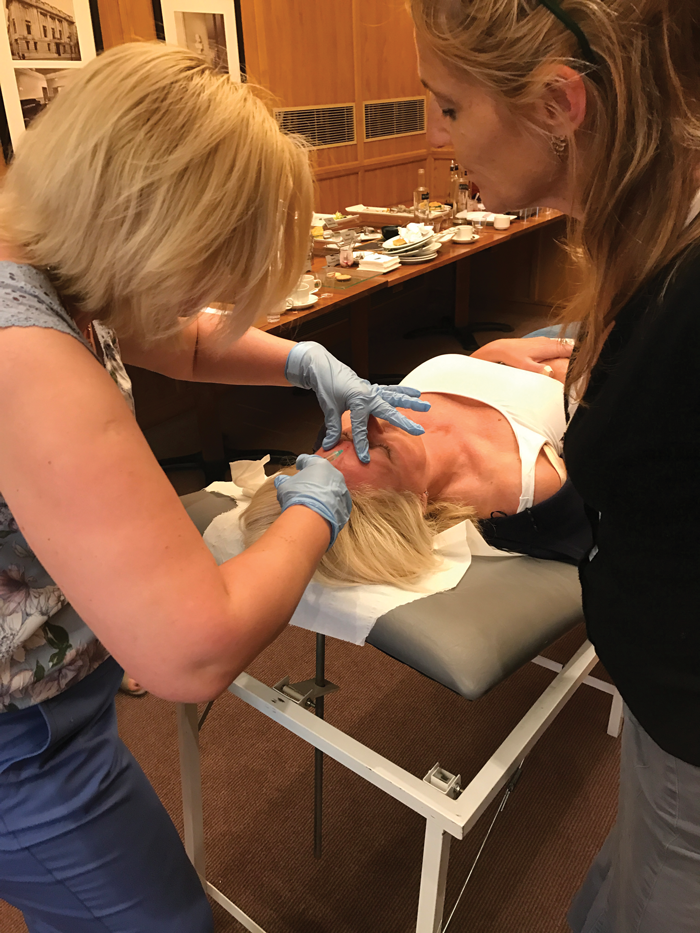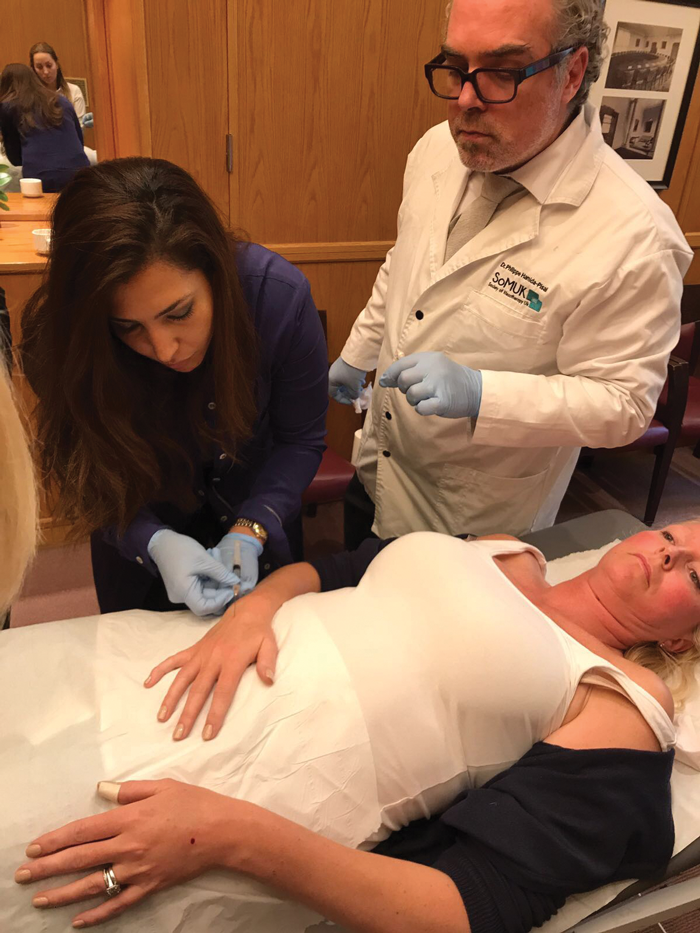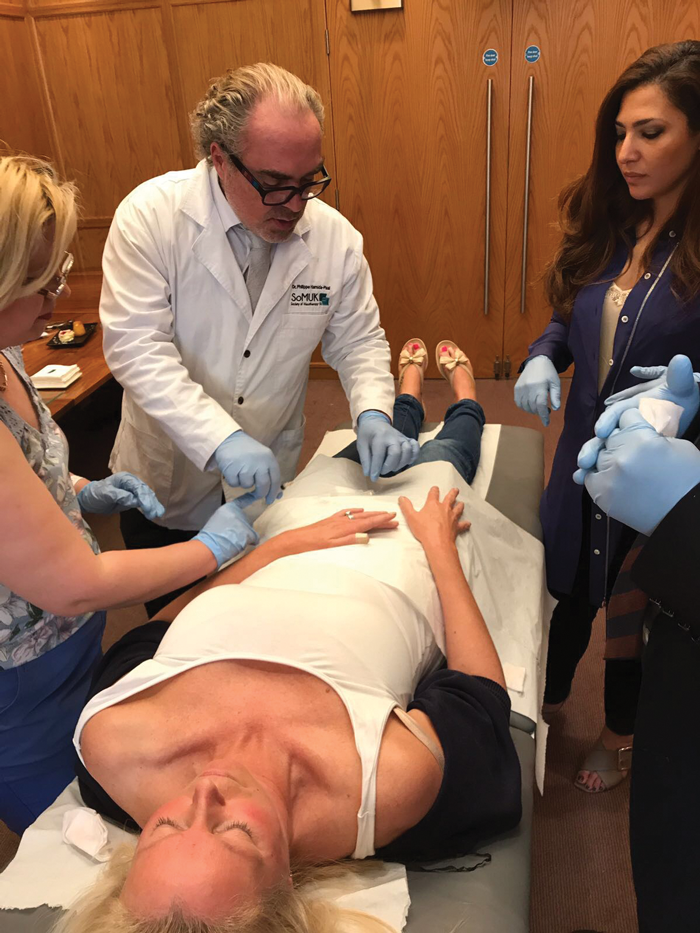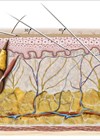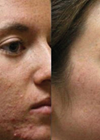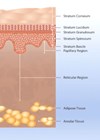Mesotherapy is a modern form of therapy that consists of injecting medicines, vitamins and minerals as close as possible to the area that needs treatment. It is an astonishingly effective technique in aesthetic medicine as it treats layers of the skin, which are hardly penetrated by other non-invasive treatments [1].
To understand better how mesotherapy works, it would be essential to make a reference to its etymology; the word meso means ‘middle’ in Greek and refers to the mesoderm which is the embryonal tissue that appears in the third week of embryonic development of the human body and which later forms the skin and the connective tissue. The word ‘therapy’ derives from the Greek term for ‘healing’. For this reason, the healing effects of mesotherapy are not only seen in the area treated; they can also act as a regulatory therapy that affects the whole body. Furthermore, if we were to find a word to define mesotherapy, we would best describe it as a “technique” – a technique of application, for, when we speak of mesotherapy, we refer to the manner in which we inject the skin in order to achieve different effects.
These effects range from the management of pain to the treatment of scars and smoothing of wrinkles. Therefore, mesotherapy could be defined as an intradermal and loco-regional “therapeutic technique from general medicine” as it was defined by the French Academy of Medicine in 1987 [2]. Mesotherapy uses all of the injectable drugs of our pharmacopeia, as long as they are compatible with the intradermal route and can be injected as close as possible to the area we want to treat.
In aesthetic medicine there are several indications for which we can successfully use mesotherapy. In this article we shall have a closer look at the most important ones, such as facial rejuvenation, Mesolift, Mesobotox, and mesotherapy to treat cellulite. We will also give a general insight into how mesotherapy is safely performed and what instruments and medicines are required for each indication. It is worth noting that mesotherapy is not only used to treat ageing skin, but also it prevents the skin from ageing.
In general terms mesotherapy consists of three different techniques of injection which treat the skin at three different levels: epidermic level, dermo epidermic level known as ‘papula’ and intradermic level known as ’nappage’. These three techniques serve different purposes as they reach different depths of the skin. Depending on the patient and on the quality of the skin, we should use one, two or all three of them. Therefore, we normally start by a careful examination of the patient. It is worth bearing in mind that the French approach to aesthetic treatments should have natural results without overcorrection. For this reason, we recommend giving a global diagnosis: face as a whole, neck, anterior chest and the back of the hands. We should always give an individual and personalised approach to each patient. The specific examination of mesotherapy can define points, or injection areas, for example tender points described by the patient or discovered during the examination.
There are plenty of reasons to use mesotherapy in aesthetic medicine; the most important ones are the following:
- It is a logical technique: why swallow an anti-inflammatory if it can be applied directly under the lesion?
- It is an effective technique: what is the use of all the glowing adjectives in the world if the results were not at least equal to those of conventional therapies.
- It is a simple technique: any physician who has attended training in mesotherapy can practice mesotherapy.
- It is a technique that allows complete compliance since it is the practitioner who administers the treatment.
The instruments needed to practise mesotherapy are the following: a syringe, a needle, an injector and medicines. The syringe should be a conventional one, usually of 5 or 10ml and of course sterile and disposable. The needle for mesotherapy is a specific one: 4mm in length and 4/10mm in diameter. This length allows us to make sure that the injection will still be intradermal. Sometimes we have to use needles of 13mm in length and 29/100mm diameter for specific cases in order to reduce pain when injecting. There are also electronic injectors, called ‘guns’ that can perform the act of mesotherapy safely and painlessly. And lastly, we need medicines which are those from our pharmacopoeia. They should always be compatible with the intradermal route and they should be chosen depending on the case and the diagnosis. In addition to the activation of the fibroblasts through active ingredients of the bio-revitalisation cocktails, mesotherapy also acts through the action of needling and could be seen as a stimulotherapy.
There are many ‘anti-ageing’ treatments. Indications will depend on various factors such as the area to be treated, stage of ageing and skin type. Mesolift is part of the overall management process. This technique combined with hyaluronic acid-based solutions can compensate poor-quality or loss of hyaluronic acid. The Mesolift technique was first described a long time ago by Dr Pistor, who proposed a two-step technique which has recently been updated and improved. The first step is to inject in the pericarotid points. The second part of the session uses nappage technique on the face, by adding procaine to multivitamins. The current concept emphasises the importance of differentiating between several categories of facial rejuvenations based on the medications used in the injections.
Vitamin cocktails that contain hyaluronic acid are best and they achieve the most visible effects; injected into the dermal-epidermal junction or the superficial dermis, exogenous hyaluronic acid rapidly reaches the dermis. This has the following results: recolonisation of the extracellular matrix, improved skin hydration and elasticity, disappearance of fine wrinkles, resulting in skin beauty (mesoglow). The skin contains the main supply of hyaluronic acid which is a key component of the extracellular matrix. Hyaluronic acid acts as a molecular sponge. Its hygroscopic properties give it its water-holding capacity and guarantee the high degree of hydratation required by skin tissues.
MesoBotox
The neologism ‘MesoBotox’ is used to express another way to practice the injection of ‘Botulinum toxin’ according to a certain number of criteria which are characteristic of each individual [1]. One criteria of absolute importance is the movement of the face: the total inability to move the face as a result of botulinum toxin injections, is not a gain of beauty and generally, having the ability to move the face makes it look more interesting and natural. When speaking about anatomy, we can certainly say that movement is a part of natural beauty. Another important criteria are the taboo zones of the face: for example the bony reliefs which often serve as tensor to muscles where we must never inject botulinum toxin. We thus need to take into account the bony morphology of the face to perform a MesoBotox.
One of the effects of ageing on the human face is a progressive narrowing of its openings; it is easy to notice the closing of the ocular opening and of the mouth. The maximal interest of the Botolinum toxin, and especially of the MesoBotox, is to be able to relax the right muscles (orbicular) and thus to cause a reopening effect. This action is expressed by a new lighting of the face as if it has better caught light [3].
When performing ‘Mesobotox’, the technique of injection of the botulinum toxin corresponds to the criteria of the mesotherapy injection. Intradermic injections must be achieved in the medium derma in order to achieve a dermic papule so that a spreading can be done. If an injection is too superficial, the papule becomes veside, the product remains at the level of the superficial dermis and the underlying effect will be nearly absent [4,5].
When injecting botulinum toxin, several grades of dilution can be used depending on the results we want to achieve. In high concentration cases of use, we would use a flask of 100U diluted with 1ml of physiological saline. For most purposes the toxin is diluted with physiological saline: for one flask of 100U of botulinum toxin, 5ml of physiological saline is added and then 0.15ml of Xylocaine at 2% adrenalised. There are further grades of dilution down to the most diluted case called ‘Mesolift with botulinum toxin’: which is a common cosmetic use of botulinum toxin, in which 10 unit of the toxin are diluted in a syringe of 5ml (procaine + vit C). In order to avoid too wide a diffusion of the product; in the short and thick muscles, it is better to use a higher concentration of toxin, whilst in the flat and thin muscles, it is better to use diluted toxin.
It is possible to perform a MesoBotox for every type of face. Although, we must concentrate on certain areas of the face, areas where the skin is thinner and the muscles are flat. However, we must be aware that there are faces with more complex expressions in which the overlapping of muscular functioning is evident. Such faces with complex expressions are generally a standard contraindication for botulinum toxin injections, since they could lead to unfortunate consequences on the appearance of our clients: lack of motion, stiffness and the general aspect could become sad, dull, wrinkled and fixed.
Cellulite
When speaking about cellulite [3,6], it is important to remember that cellulite and localised fat overload are two different things. Cellulite (hydrolipodystrophy) occurs in the superficial sub-cutis of the skin. Overload of fat, on the contrary, occurs in the subcutaneous tissue and it therefore does not strictly concern mesotherapy [6]. The goal of mesotherapy is to adapt a specific treatment to each form of cellulite. In general, without going into too much detail, cellulite will occur in different forms depending on the appearance it may have when palpating. This will also match a clinico-pathological form: flaccid cellulite, fat cellulite, fibrous cellulite, fibro-sclerotic cellulite, and orange skin cellulite: cellulite caused by water retention.
“Mesotherapy is not a definitive science. It is a living and ever-changing organism.”
When we perform a mesotherapy treatment, the results will be directly linked to the knowledge of this particular state depending on each patient and depending on their age and the age of the specific cellulite. Therefore, examining and questioning the patient is of crucial importance. Our first question should be: “Since when (what age) have you found the presence of cellulite?” This allows us to specify the age of cellulite as we explained above.
After questioning the patient we should come to the examination, preceded by an inspection. Palpation is an essential moment of our examination: each zone should be palpated carefully and conscientiously because palpation can be painful if done hastily. Assess the degree of skin tone, the famous ‘orange skin’, flaccidity, skin thickening, the cutaneous fold, the deep fibrosis, cystic sclerotic areas and especially the hard nodules in the middle of mass cellulite. Do not hesitate to mark these areas with a cross. This examination will determine our final result. Then weigh the patient and, finally, take precise and reliable measurements. Only then will we perform our therapeutic choice and establish a long-term strategy, one that will always be adjustable according to the results obtained.
Conclusion
It is clear that mesotherapy can deliver good results on a number of conditions. However, we must be mindful of being honest with the patient when proposing the results of treatments and not promise the impossible and raise their hopes for a cure. In general, this statement is correct for mesotherapy but should also be applied for all aesthetic medicine.
Although many of us mostly concentrate on the cosmetic aspects and wonders of the treatment, let us remember that the method can also be used for many other medical maladies. It is a valuable addition to the treatment of arthritis, pain, dermatological conditions, sports injuries, and many other conditions.
Mesotherapy, like any other medical discipline, is not a definitive science. It is a living and ever-changing organism. All over the world our colleagues are discovering new indications, new formulations, and new ways of delivering them. Our collective effort helps to improve our knowledge and to break the barriers limiting treatment outcomes. There is always a better way of doing things, and some of these breakthroughs should not be limited and confined to just a few individuals. The knowledge needs to be shared and propagated for the benefit of all of us for whom mesotherapy has become an important addition to our practices.
References
1. Rotunda A. JAAD 2005 by the American Academy of Dermatology Inc.
2. Hamida-Pisal P, Redaelli A, Suarez-Bigetti M: Mesotherapy - Basic Principles and Clinical Practice. Firenze; 2016:19-27.
3. Duncan D, Chubaty R. Clinical safety data and standards of practice for injection lipolysis: a retrospective study. Aesthet Surg J 2006;26(5):575-8.
4. Klein AW. Dilution and storage of botulinum toxin. Dermatol Surg 1998:24:1179-80.
5. Wieder JM, Moy RL. Understanding botulinum toxin. Surgical anatomy of the frown, forehead, and periocular region. Dermatol Surg 1998;24(11):1172-4.
6. Le Coz J: Mesotherapy and lipolysis: a comprehensive clinical approach. Esthetic Medic; France: 2008.
Further reading
- Carruthers A, Carruthers J. History of the cosmetic use of Botulinum A Exotoxin. Dermatol Surg 1998;24(11):1168-70.
- Carruthers A, Carruthers J. The treatment of glabellar furrows with botulinum A exotoxin. J Dermatol Surg Oncol 1990;16:83.
- Carruthers A, Carruthers J. Clinical indications and injection technique for the cosmetic use of Botulinum A Exotoxin. Dermatol Surg 1998;24(11):1189-94.
- Carruthers J, Carruthers A. The adjunctive usage of botulinum toxin. Dermatol Surg 1998;24(11):1244-7.
- Le Louarn C. Botulinum toxin A and facial lines: the variable concentration. Aest Plast Surg 2001;25:73-84.
- Fagien S. Botox for the treatment of dynamic and hyperkinetic facial lines and furrows: Adjunctive use in facial Aesthetic Surgery. Plast Reconstr Surg 1999;103(2):701-13.
- Binder WJ, Blitzer A, Brin MF. Treatment of hyperfunctional lines of the face with Botulinum toxin A. Dermatol Surg 1998;24(11):1198-205.
- Fulton J.E. Botulinum Toxin The Newport Beach Experience. Dermatol Surg 1998;24(11):1219-24.
Declaration of competing interests: None declared.
COMMENTS ARE WELCOME

